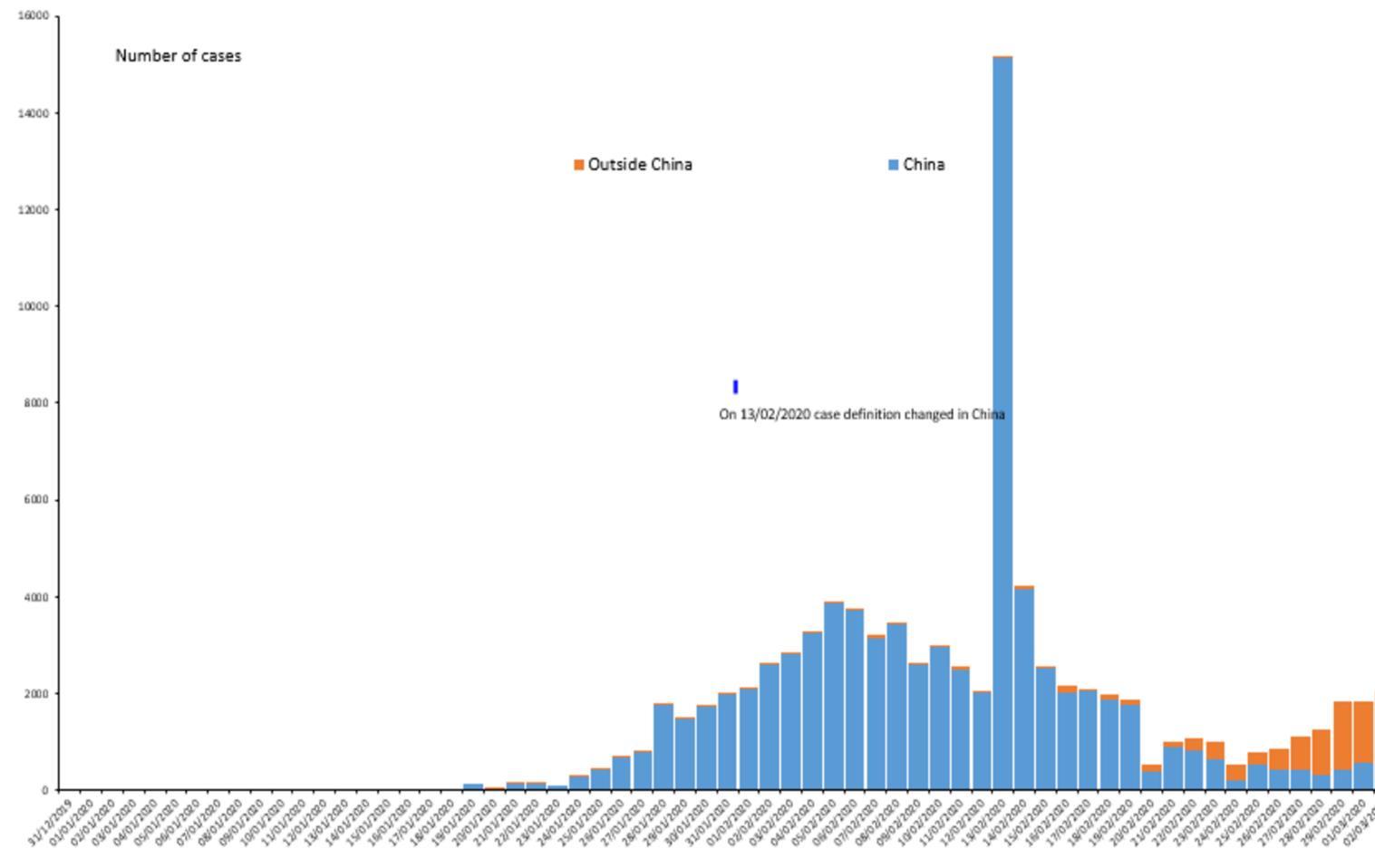
3 minute read
Containing and Avoiding the Virus
Figure 4 –Graph showing changes crude fatality ratio over the period from the 1 st January to the 20 th of February in mainland China (Source –WHO-China Joint Mission, 2020).
What often happens in the media is that a lot of importance is given to the number of deaths while no attention is given to the number of full recoveries. As of the date of writing of this paper, compared to 2,990 deaths, there were 42,670 recoveries to date. That means that there were 14.27 times more recoveries than deaths as well as 48.78% of all recorded cases up to that point had recovered and were no longer ill. Even cases of severe infections have shown high recovery rates with only 13.4% being fatal (this last percentage is based on data collected up to 20 th of February 2020).
Advertisement
Whilst admittedly the virus infectiousness is very high and has allowed it to rapidly be exported from mainland China to numerous countries, containment efforts have been nonetheless relatively successful, especially in China. As previously discussed, spread of the disease in mainland China outside of Hubei province has been hindered significantly through effective surveillance and quarantine measures. So much so that in a large number of provinces which at some point exceeded the 1000 confirmed cases threshold are, as of the date of writing this paper, well on their way toward eradicating the disease, with active cases just over 100. All this shows that if countries adopt China’s quarantine methods and handling of the epidemic, they should be able to easily stop the further spread of the virus, both nationally and internationally. This goes especially to countries in which the number of infected patients is still rising rapidly such as South Korea, Italy and Iran. For as of yet uninfected countries, it is paramount that the necessary contingency plans based heavily on China’s experience are pre-emptively formulated so that, in the event of importation of the disease, rapid quarantine and containment of the virus could occur, hindering further propagation among the country’s populace.
Figure 5 –Graph showing the number of new, confirmed cases daily and the proportion of new cases in and outside of China; clearly indicating that while spread in China has decreased, spread outside of China is increasing (Source –European Centre for Disease Prevention and Control, 2020).

In the report published by the WHO-China Joint Commission dated 24 th February 2020, several guidelines are put forth for as of yet uninfected countries and the general public, among others. For uninfected countries such as Malta, the commission emphasises having what it describes as an “all-ofgovernment” and “all-of-society” contingency plan for virus importation. It is crucial that containment of the virus is of the uppermost priority for the entire government and not just leaving it as the responsibility of solely the Ministry for Health. Moreover, it is even more crucial that the general public understands the cruciality of following guidelines and complying with instructions from authorities to safeguard public health. More specifically on the guidelines for the authorities, the report also emphasises the need to include in the contingency plan extensive surveillance, rapid detection, response and isolation frameworks to immediately cordon off cluster to prevent community transmission. Of paramount importance is the part on surveillance. Not only is this crucial for detecting the first entry of the virus within the country but more importantly to cut human transmission chains once the virus has already been introduced. This has been the key to China’s successful containment efforts where large teams of epidemiologists tracked non-stop to trace close contacts of new cases and quarantine other infected individuals before any more community transmission could occur. Lastly, an aggressive information campaign and transparency in measures implemented is key to rooting out misinformation and ensuring the general public follows procedures to help curb the further spread of the virus within its communities.
With regards the general public; the commission advises that the general public ensures that they inform themselves from reliable sources on the virus and how to contain the disease. Moreover, it also encourages people to emphasize and adopt practices to improve personal hygiene and to collaborate extensively with authorities to limit the virus from spreading.



